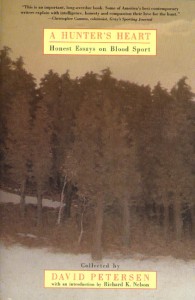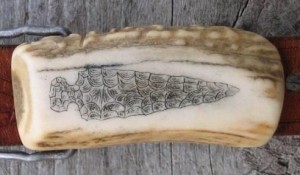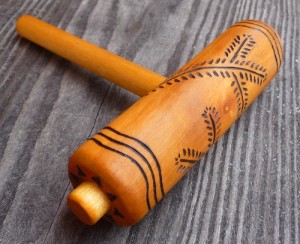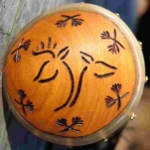 As I contemplated becoming a hunter, words helped.
As I contemplated becoming a hunter, words helped.
It was good, for instance, to read Richard Nelson’s introduction to A Hunter’s Heart.
There, I caught a glimpse of his journey: from a boyhood of believing that “hunting was entirely evil—no matter who did it, how they did it, or why,” to an adulthood in which hunting served to remind him that he was not separate from his fellow creatures but “twisted together with them in one great braidwork of life.”
But words only went so far.
Others’ words could suggest only what hunting had meant to them.
My own words could shape only questions: Now that I was eating fellow vertebrates again, would hunting help me confront their deaths? Would it deepen my relationship with the hills and valleys I call home? How would it feel to kill a deer?
Even in asking such questions, language felt too narrow. I could not describe the feelings that stirred inside me, let alone name the unknown force—what was it?—that called me to the woods.
If I had been a fine artist, I might have sought insight in paintings. If I had been a musician, I might have sought it in songs.
Being only an amateur craftsman, I sought it in things handmade.
 When a cardboard box arrived in the mail, I took out the old knife, secured in a new sheath Uncle Mark had crafted for it. I contemplated the red buck he had painted on its front, and the black deer tracks hidden behind the haft. I reflected on the belt he had made, too, and the ancientness of the image scrimshawed on the antler buckle.
When a cardboard box arrived in the mail, I took out the old knife, secured in a new sheath Uncle Mark had crafted for it. I contemplated the red buck he had painted on its front, and the black deer tracks hidden behind the haft. I reflected on the belt he had made, too, and the ancientness of the image scrimshawed on the antler buckle.
 Later, after I bought a secondhand caplock rifle, I took a pruned branch from one of our front yard apple trees—under which deer sometimes forage—and fashioned a ball-starter. With a woodburner, I sketched balsam twigs, the kind of cover through which I might stalk.
Later, after I bought a secondhand caplock rifle, I took a pruned branch from one of our front yard apple trees—under which deer sometimes forage—and fashioned a ball-starter. With a woodburner, I sketched balsam twigs, the kind of cover through which I might stalk.
 With helpful tips from Mark, I made a powderhorn, too. Two deer stood in silhouette on its cherry plug. Crude lines etched into its side suggested Cold Brook, the rocky little waterway that tumbles through the woods behind our house, along whose banks I might look for tracks.
With helpful tips from Mark, I made a powderhorn, too. Two deer stood in silhouette on its cherry plug. Crude lines etched into its side suggested Cold Brook, the rocky little waterway that tumbles through the woods behind our house, along whose banks I might look for tracks.
Answers were still years away. But in these objects—in the variety of their shapes and textures and colors, in their symbolic and practical functions, in their very materials—the questions were given a fuller, more nuanced voice, specific to my hunting, here, in this place.
It’s hard to tell you what that voice said, though, muddling around within the constraints of these twenty-six letters.
© 2010 Tovar Cerulli

And some wonderful handmade things as well. I wish I was even remotely good with my hands – and it’s wonderful that you conveyed your new-found passion for hunting, and all things outdoors, into something visually appealing.
While I’m very attracted to words, visual attractants are always better. 🙂
Those are beautiful. So fitting to have such thoughtful, well-crafted tools for honoring the sacredness of life.
Thanks, Arthur and Annette. I’m glad you enjoyed them.
Amateur?
Language may be a narrow, imprecise tool, but I’ve found it helpful to get the dictionary out from time to time to check definitions. I wish I could do such “amateurish” work. It’s beautiful.
Anyway, I’m writing because I once read something about an archeologist who found a harpoon point carved of bone. She looked at it, and said “All it had to do was catch walrus, but they made it beautiful!”
John
PS Sorry if I sound grumpy. The other reason your post struck a chord was because I was up late trying to get the stitching right on a knife sheath. I guess I share the impulse, if not the execution.
Ha! Got a laugh out of your dictionary suggestion, John. 🙂
That’s a great example of language’s imprecision. Compared to a master craftsman or a professional (I’ve known some of both), I am definitely an amateur. I dabble here and there, asking for advice and figuring things out just enough to be able to make one powder horn, one belt, or whatever. That some of the objects I craft are pleasing to look at — and don’t seem amateurish to others — is a joy, of course.
“All it had to do was catch walrus, but they made it beautiful!” Yes! Things that are functional but ugly depress us, while things that are functional and beautiful uplift us, don’t you think? It can be a house or a harpoon: beauty speaks to our souls.
No, I wouldn’t call that work “amateurish.” When I was a kid I had a woodburning set, and I don’t remember ever making anything that looked like those pieces.
(But I guess there is that other definition of amateur, from the root of the word, meaning that you did it for love rather than money. That probably fits.)
I own several hunting tools of the sort you describe as functional but ugly. My modern muzzleloader fits that description. So does the bullet starter I use with it. Sadly, it looks very different from yours. It’s a little T-shaped gadget made from aluminum and plastic. It fits nicely in my pocket, and weighs about an ounce. But it has about as much charm as a cheap ballpoint pen.
Similarly, my main deer rifle is very reliable, very accurate, and made entirely from plastic and stainless steel. Although I value it highly for its functionality, I don’t exactly love and cherish it. It’s a tool with about as much personality and character as a Crescent wrench or pliers. Carrying it into the woods may not depress me, but it certainly doesn’t uplift me.
I remember deliberating–no, agonizing–over the choice when I bought my first synthetic-and-stainless rifle. (As opposed to blue steel and walnut.) It’s good to not worry about rain, snow, mud, rust, or scratches. But I knew there would be a trade-off.
True, it’s good to not be overly attached to material things. But some things do indeed have a beauty that speaks to our souls. They’re not necessarily the material objects that cost us the most dollars, and they’re not necessarily the objects whose possession inspires envy in others.
There’s something else about them…
Nicely put, Al.
The root of “amateur” — “love” — definitely fits.
I probably overstated things in saying that ugly-but-functional objects depress us. I’m not depressed by the valuable steel and plastic tools I use all the time. I’m just not inspired by them. Their form and appearance don’t add any meaningful depth or dimension to the task at hand, let alone to life as a whole.
T-shaped, aluminium and plastic — yes, that’s my bullet starter too. Ugly, but it works.
I do get the impression that there’s a widespread tradition of making things used for hunting that combine beauty, grace and function. A lot of native american things I’ve seen seem to have that quality. There’s a long standing western tradition of making beautiful guns, and not just London Bests either. I bought a replacement for an old Savage 99 stock I broke on a deer hunt in Prince William Sound, (on a beach consisting of rocks covered with wet seaweed, sort of like walking on bowling balls slathered with vaseline). The difference between the old stock and the replacement is amazing — the way the pistol grip is shaped, the crease where the grip meets the comb, etc. Sometime after 1954, the stocks got clunkier, probably to reduce expensive hand labor. It’s a utilitarian rifle — no checkering or fancy wood — but they put some grace into it.
Anyway, beautiful work. There are plenty of amateurs who do work that is not amateurish at all. I wish I fell into that category.
John
Isn’t personalized stuff cool and sort of tribal?! The beauty of putting who you are and maybe the identity to inspire, on your gear! Bringing luck ,fate or destiny into play. Showing your love for your possesions and underlining their importance in the process. The customizing of your boat, fletching on arrows, or a piece of a deer’s ear on the sling, seem to give a uniqueness to it’s owner, and say volumes about them and are interesting!